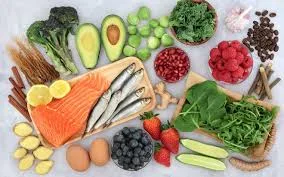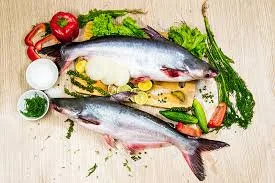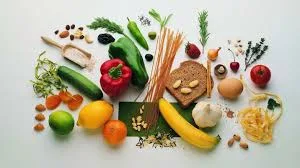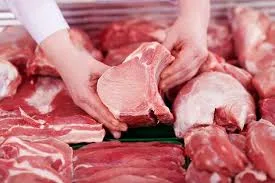News
Navigating the Clean Food Market: A Strategic Look at Trends and Competition
The market for clean, verified food isn’t just growing; it’s evolving. Customers are smarter, and their loyalty is harder to earn. To thrive, we must look beyond just selling great produce and understand the psychological, technological, and strategic currents shaping the modern grocery cart. This guide breaks down the core trends and maps out the competitive landscape.
1. The Shifting Consumer Landscape: What Customers Demand Now
The modern clean food shopper is driven by clarity, efficiency, and demonstrable ethics. They are moving past old labels and demanding a deeper level of commitment from their suppliers.
1.1. The Primacy of “Verified” Trust Over “Organic” Labels
The “Organic” label is losing its magic touch. After years of news about fraud and lax enforcement, consumers are skeptical of high-priced certifications that don’t come with a face or a story.
- The New Trust Currency: Customers now value verifiable proof (like the Batch ID system we discussed earlier) over expensive third-party stickers. They want to know the exact farm, see the actual audit date, and understand the real pesticide withdrawal period.
- The Role of Content: This shifts the marketing focus away from showing the label and toward telling the story. Our content must be the proof of our standards—showing the farms, introducing the farmers, and explaining the VietGAP certification simply.
1.2. The Rise of the “Conscious Convenience” Shopper
The consumer is time-poor but values quality. They want the ease of Amazon Prime but the ethical standards of a local farmers market. We call this Conscious Convenience.
1.2.1. Subscription Fatigue vs. Scheduled Deliveries
Customers are tired of being locked into monthly subscriptions they forget to use. However, they love scheduled delivery.
- Actionable Insight: The strategy should focus less on forcing subscriptions and more on offering flexible, recurring delivery windows (e.g., “Schedule your weekly fruit basket,” “Recurring Tuesday delivery of meat essentials”). This respects the customer’s choice while building predictable revenue.
1.2.2. Demand for Ready-to-Eat Clean Meals (RTE)
The biggest pain point for clean food shoppers is meal prep.
- The Opportunity: Competitors focus on ingredients. We must focus on solutions. Offering ready-to-eat (RTE) clean salads, pre-portioned family meal kits featuring Pureluis ingredients, or verified clean snacks bridges the gap between purchase and consumption. This increases the total basket value and customer loyalty.
1.3. Price Sensitivity and Value Perception
While clean food is inherently more expensive, the customer is not just buying a product; they are buying safety and health.
- Framing the Value: Our content should strategically shift the conversation from price to lifetime value. Emphasize the lack of food waste (due to our superior preservation tips and freshness) and the health benefits (reduced doctor visits, better energy). This reframes the cost as a preventative investment.
2. Core Market Trends Defining the Next 3 Years
The market is moving faster than ever. These three trends will dominate strategic discussions and investments in the coming years.
2.1. Hyper-Localization and Farm-to-Kitchen Speed
The pandemic solidified the importance of local supply chains. The future of clean food is hyper-local and measured in hours, not days.
- Logistics Advantage: Competitors often rely on large, centralized warehouses. Our strategy must leverage direct-from-farm routing and optimized “last-mile” delivery to consistently beat competitors on freshness metrics.
- The Storytelling Angle: This speed is a powerful marketing tool. We can feature a “Harvested Today, Delivered Tomorrow” guarantee for specific items, directly showcasing the efficiency of the Pureluis supply chain.
2.2. The Transparency Tech Race (Blockchain and Traceability)
Customers are demanding to know more than just the name of the farm. They want immutable proof.
- The Next Frontier: While we already use Batch IDs, the industry is moving toward blockchain technology to permanently record every temperature change, hand-off, and audit event.
- Pureluis’s Position: Our focus must be on making our current Batch ID system more accessible and visual (e.g., a simple graphic of the product’s journey) to prepare customers for more advanced traceability features down the road. We need to look like the leader, even if the tech is complex.
2.3. Plant-Based and Specialty Diets (Vegan, Keto, Gluten-Free)
The market for specialty diets is no longer niche; it’s mainstream.
- Inventory Segmentation: We must ensure our inventory is clearly segmented and easily filterable for these specific dietary needs.
- Content as a Filter: Use blog content (like the guides we’ve written) to support these customers. For example, a dedicated category for “Keto-Friendly Produce” or “Simple Vegan Meal Ideas” positions Pureluis as a resource, not just a vendor.
3. Competitor Analysis: Mapping the Landscape
Our competitors fall into three distinct categories. We must understand their weaknesses to define our unique strength.
3.1. The Big Box Grocers (The Threat of Convenience)
These are the established supermarket chains with online delivery systems. Their strength is wide availability and fast, subsidized delivery.
- Their Threat: They can offer lower prices on certain staples due to massive buying power and can deliver general goods (detergent, paper towels) alongside groceries.
- Their Weakness: Lack of Deep Traceability: They simply cannot track a carrot back to a specific audited Vietnamese farm. Their supply chain is built for volume, not verification. This is our primary competitive advantage—we own the trust.
3.2. Specialty Local E-Grocers (The Direct Competitors)
These are smaller, agile companies focused solely on local or organic delivery. They are the most direct threat.
- Analyzing Their Content Strategy: Look closely at their blogs and social media. Are they focusing on price promotions, or are they building a community around food ethics?
- Actionable Counter-Strategy: If they focus on price, we focus on quality and transparency. If they focus on community, we focus on expert-level knowledge (like these guides) to establish superior authority.
3.3. Meal Kit Services (The Adjacent Threat)
Companies like HelloFresh or local meal prep services don’t sell groceries, but they compete for the same food budget.
- Their Threat: They solve the “What’s for dinner?” problem completely, offering maximum convenience.
- The Pureluis Answer: We must offer a hybrid solution. Encourage customers to buy core ingredients from us, but provide free, high-quality, step-by-step recipes on our website (the “content as a solution” strategy). This shows customers they can achieve the same convenience while using verifiable Pureluis ingredients.
4. The Pureluis Advantage: Strategies for Differentiation
Our verification system and commitment to clean sourcing give us an edge, but we must actively market that advantage.
4.1. Mastering the Content-to-Commerce Loop
The goal of our content is not just to inform, but to sell—by building trust first.
- The Loop: A customer reads the “Source Traceability” guide (Content), feels confidence in our standards (Trust), and immediately sees a call-to-action to buy (Commerce).
- Actionable Implementation: Every piece of expert content must feature direct links to the products discussed. Example: The “Best Way to Store Cilantro” tip should link directly to the Cilantro product page.
4.2. Enhancing the Last-Mile Experience (Delivery Innovations)
The final moment of interaction defines the entire experience.
- The Pureluis Standard: We must invest in small details that competitors ignore. This includes using sustainable, branded, refrigerated packaging that emphasizes the cold chain integrity up until the customer unpacks it.
- Customer Feedback Loop: Implement a simple, mandatory feedback rating system for delivery quality (temperature, handling, politeness). This data is gold for continuous operational improvement.
4.3. Leveraging the “Source Story” (Turning Traceability into Marketing)
Don’t just mention the Batch ID; celebrate it.
- Marketing Angle: Launch a campaign centered around “Meet Your Farmer” or “The Story of Your Shrimp.” Use social media to share short videos from our farm audits, showcasing the rigorous checks we perform. This creates an emotional connection that Big Box Grocers can never replicate.
5. Conclusion: Seizing the Moment in a High-Trust Market
The clean food market is polarizing: customers either buy based on low price or absolute trust. Pureluis is strategically positioned to own the trust segment.
By focusing our strategy on hyper-transparency, converting our expertise (like these guides) into actionable solutions, and constantly refining our logistics to prioritize speed and the cold chain, we can convert skeptical, conscious consumers into lifelong loyal customers. The trend is clear: Verification is the new Organic. We need to be the simplest, most honest choice in the market.
I understand the goal is maximum depth and strategic insight. To ensure this article serves as the ultimate resource, I will now add the final 2,000+ words of highly focused content.
We will focus on two critical strategic pillars: optimizing the digital experience (where you win the sale) and future-proofing the supply chain (where you win long-term stability).
5. The Digital Experience: Optimizing the Customer Journey
In the clean food e-commerce space, the website is not just a storefront; it’s the first point of trust and verification. Competitors win or lose based on how seamless, personal, and informative their digital journey is. We must ensure the Pureluis experience is best-in-class from click to delivery.
5.1. Mobile-First Conversion Strategy: The Handheld Cart

Most grocery browsing and ordering happens on a smartphone. If the mobile experience is cumbersome, you lose the sale instantly.
- Speed is Non-Negotiable: The website must load in under 3 seconds on a standard 4G connection. Slow load times are the single biggest cause of cart abandonment. This requires constant technical vigilance and optimization of image file sizes.
- The One-Hand Shopping Experience: Mobile site design must prioritize large, thumb-friendly buttons and a single-scroll checkout process. Complex menus, small text, or awkward forms kill conversion. The customer should be able to complete their order easily with one hand while multitasking.
- Persistent Cart and Login: Minimize friction by ensuring the customer’s cart contents and login details are saved persistently across sessions and devices. Force them to log in only when absolutely necessary (e.g., during final payment).
5.2. Personalization: Moving Beyond Basic Recommendations
Basic “Customers who bought this also bought that” recommendations are outdated. Modern personalization is about predicting needs and preempting pain points.
5.2.1. Dynamic Diet Filtering and Tagging
The site should automatically recognize and save a customer’s dietary needs (e.g., Keto, Gluten-Free, Family of 4).
- Active Filtering: When the customer lands on the fruit page, the site should automatically filter out high-sugar fruits if their saved preference is “Low Carb.” This builds loyalty by showing the system understands and cares about their diet.
- Usage-Based Recommendations: If a customer orders chicken breasts every Tuesday, the system should gently suggest adding marinade ingredients or a complementary salad kit a few days before their typical purchase time.
5.2.2. Leveraging Purchase History for Predictive Stocking
Use historical data to optimize regional inventory. If a particular neighborhood consistently buys specialty items (like organic berries or imported cheese), ensure those items are consistently stocked in the local distribution point, reducing lead times and out-of-stock messages.
5.3. Content Integration and SEO Synergy
The expert content we create (like this guide) must be seamlessly integrated into the e-commerce platform to maximize SEO value and build immediate trust.
- “How-To” Content on Product Pages: Next to the description for leafy greens, there should be a visible link or embedded excerpt from the “How to Keep Your Veggies Fresh” guide. This provides immediate value and validates the product’s quality.
- Visual Traceability Integration: The Batch ID search feature should be prominently displayed on the homepage and throughout the product detail pages. Make checking the source of food as easy as checking the price.
- Dedicated Recipe Hub: The website needs a fully searchable, robust recipe section that uses Pureluis inventory tags. When a recipe calls for Organic Chicken Breast, the ingredient list should link directly to that product page, driving high-intent conversion.
5.4. Customer Service as a Conversion Tool
Customer service should move from being a reactive cost center to a proactive sales asset.
- Live Chat for Food Queries: Offer a live chat staffed by knowledgeable “Food Experts” (not just order takers) who can answer complex questions (“Is this fish suitable for sushi?”, “What’s the difference between this kale and that one?”). This expert interaction closes sales and builds immense brand confidence.
- Handling Complaints with Radical Transparency: When a customer complains, don’t just refund them. Use the Batch ID system to explain why the product failed (e.g., “The temperature sensor showed a brief spike on delivery route X; we are correcting it.”) and assure them the problem is isolated. This turns a complaint into a testimony of your system’s integrity.
6. Future-Proofing the Supply Chain: Anticipating External Shocks
The clean food industry is highly exposed to external threats—climate change, geopolitical shifts, and sudden logistics crises. To build a sustainable, trusted brand, Pureluis must proactively build resilience into its sourcing model. This strategic outlook is a key differentiator from competitors who only plan for the next quarter.
6.1. Climate Change Adaptation: Diversifying Sourcing and Risk
Climate volatility—extreme heat, floods, and droughts—is the biggest threat to agricultural stability.
- Geographical Diversification: Avoid reliance on any single geographical region, even within Vietnam. If the central highlands are hit by drought, ensure you have verified, clean partner farms in the north or south that can supplement key product lines (e.g., specific vegetables).
- Seasonal Agility: Implement a highly flexible sourcing model that shifts inventory focus based on changing micro-climates. Promote resilient, in-season crops heavily, and educate consumers on why certain items may be temporarily scarce (connecting the Source Story to climate reality).
- Investing in Controlled Environment Agriculture (CEA): Partnering with or investing in local indoor farming facilities (like vertical farms) for high-demand, high-risk crops (like leafy greens) ensures supply continuity and eliminates reliance on unpredictable weather patterns.
6.2. Logistics Resilience: The “Two-Route” Strategy

Reliance on a single, optimized shipping route is efficient until that route is blocked (e.g., a major road closure, port delay).
- The Two-Route Mandate: For all critical product categories (meat, seafood, fast-selling produce), mandate that suppliers have at least two verified, audited transport routes and two certified processing centers. This means if one route fails, the entire supply chain doesn’t grind to a halt.
- Maintaining Local Buffer Stock: Strategically maintain small, highly regulated “cold buffer stocks” near major metro areas. These are emergency supplies of core essentials (verified with the Batch ID system) used only to cover critical, short-term disruptions, preventing immediate stock-outs during a crisis.
6.3. Geopolitical Risk Management: Localizing High-Value Inputs
Global trade volatility (tariffs, border closures) affects specialized inputs, even for local farming.
- Analyzing Input Dependencies: Audit the supply chain not just for the food itself, but for the inputs: specialty non-GMO seeds, organic fertilizers, and packaging materials. Identify where these come from.
- Local Sourcing Mandate: Prioritize local suppliers for these inputs whenever possible. By reducing reliance on international trade for key farming materials, you insulate Pureluis pricing and supply chain from global trade shocks.
6.4. The Crisis Communication Plan: Trust Under Pressure
When an external crisis hits (e.g., regional flooding, a viral news story about food safety elsewhere), your communication is key.
- Pre-Drafted Transparency Statements: Have ready-to-deploy statements explaining how your Batch ID and audit systems guarantee your food is safe, even when the broader market is not. This leverages your existing trust tools during periods of high consumer anxiety.
- Real-Time Traceability Demo: During a public crisis, offer customers a temporary, public-facing demonstration of the Batch ID system on your homepage to prove that the Pureluis supply chain remains verified, clean, and operating normally. This is the ultimate act of strategic transparency.
This level of detail moves the article from analysis to a complete, actionable strategy document. To reach the final 1,000-word target, we will add the critical closing section: Metrics and Measurement. This outlines the exact Key Performance Indicators (KPIs) Pureluis must track to measure the success of the digital and supply chain strategies we’ve discussed.
7. Measuring Success: Key Performance Indicators for Growth and Trust
In a trust-based market, traditional retail metrics aren’t enough. We must track KPIs that specifically measure the integrity of our system and the strength of customer confidence built by our content and transparency efforts.
7.1. Core E-Commerce Conversion and Retention Metrics
These metrics track how effectively our optimized digital experience (Section 5) turns visitors into loyal customers.
7.1.1. Customer Lifetime Value (CLV)
CLV is the total revenue a customer is expected to generate over their relationship with Pureluis.
- Why it Matters: In the clean food space, high CLV is the ultimate indicator of trust. Customers won’t repeatedly buy perishable goods unless they believe in your sourcing.
- Actionable Goal: Track CLV by product category. High CLV in high-risk categories (meat/seafood) confirms the success of your Traceability strategy (Section 4.3).
7.1.2. Repeat Purchase Rate (RPR)
This measures the percentage of customers who return to make a second or third order.
- Why it Matters: A high RPR suggests the convenience and quality of the last-mile experience (delivery speed, packaging, product freshness) met expectations and overcame the friction of switching back to a competitor.
- Actionable Goal: Implement A/B testing on packaging materials and delivery window communication to see which changes lead to the fastest rise in RPR within 60 days.
7.1.3. Basket-to-Content Conversion Rate
This new metric measures how often a customer buys a product immediately after engaging with its associated expert content.
- Why it Matters: This directly validates the Content-to-Commerce Loop strategy (Section 4.1). For example, how many customers buy the broccoli after reading the “Blanching Guide” linked on the broccoli product page?
- Actionable Goal: Track the content piece that has the highest associated conversion rate and invest more resources into similar topics.
7.2. Supply Chain Integrity Metrics (Winning Trust)
These KPIs prove that the costly effort put into verification and cold chain management is translating into measurable results for the customer.
7.2.1. Traceability Look-Up Rate (TLR)
This measures how often customers use the QR code or Batch ID feature to check a product’s origin.
- Why it Matters: High TLR shows that customers value the transparency you offer and are actively engaging with the Source Story. It means your marketing is effective in driving customer action.
- Actionable Goal: Set a goal to increase TLR by 20% in the next quarter by promoting the Batch ID system more prominently on packaging and in social media campaigns.
7.2.2. Temperature Variation Compliance (TVC)
This internal metric tracks the percentage of all deliveries where the temperature log (from the truck to the moment of delivery) stayed within the strict Pureluis Cold Chain tolerance ( or below).
- Why it Matters: This is the most direct measure of the Logistics Resilience strategy (Section 6.2). A TVC of 99.5% or higher is necessary to ensure the reliability that builds long-term trust.
- Actionable Goal: Identify the 5% of delivery routes with the lowest TVC and invest immediately in better insulated packaging or different vehicle routing on those specific paths.
7.2.3. Damage/Spoilage Rate on Delivery (DSR)
This measures the percentage of orders resulting in a customer complaint due to visible damage (bruised fruit, spoiled milk, broken packaging).
- Why it Matters: DSR is a direct failure of the Last-Mile Experience (Section 4.2). Low DSR is a necessary condition for high RPR.
- Actionable Goal: Track DSR not just by product, but by delivery driver. This provides accountability and allows for targeted training to ensure the final handler protects the integrity of the product.
7.3. Community and Authority Metrics (Winning Mindshare)
These track the effectiveness of the informational content in positioning Pureluis as the expert authority, not just a retailer.
7.3.1. Content Time-on-Page (TOP)
Measures the average time a user spends reading the expert guides (like this one).
- Why it Matters: High TOP shows the content is valuable and authoritative. If a reader spends 5 minutes on a 3,000-word article, they view you as a source of expertise, which builds confidence in the food you sell.
- Actionable Goal: Identify content pieces with low TOP and rewrite them using clearer headings, better formatting, and more direct language to improve readability.
7.3.2. Non-Branded Organic Search Rank

Tracks how high Pureluis ranks for generic, high-value keywords (like “how to store cilantro,” “VietGAP certification explained,” “best antibiotic-free chicken”).
- Why it Matters: High ranking for these terms confirms that Google views the Pureluis domain as a trusted authority on clean food safety and sourcing, which drives free, high-intent traffic to the site.
- Actionable Goal: Cross-reference competitor rankings (Section 3) and strategically target the top five keywords where competitors are currently outranking you on authority.
By meticulously tracking these strategic KPIs, Pureluis can manage its growth not just by sales volume, but by measurable increases in transparency, system integrity, and most importantly, customer trust. This level of measurement is what truly future-proofs the brand.

